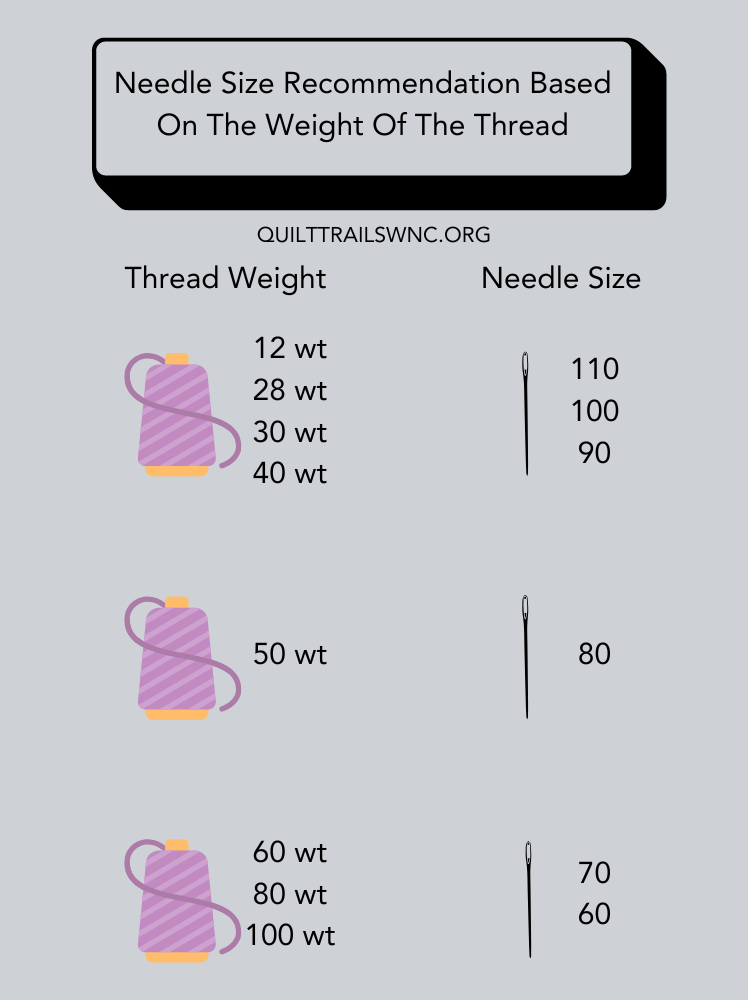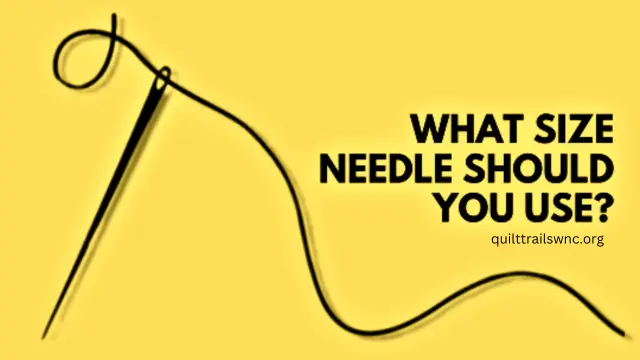Quilts are thick because they are made of multiple layers of fabric. Thus, a 90/14 size needle is the best choice since it has a slim point, tapered shaft, and slightly stronger point for stitching through multiple fabric layers.
The size of the needle is also influenced by the thread’s weight. The heavier the thread, the larger the needle needs to be.
Recommended needle size
When making quilts, you need the right needle size to achieve good results. Without the right needle size, you will most likely experience problems such as thread breaks or shreds, and skipped stitches.
Quilting needles are designed specifically for machine quilting and have a rounded point. Machine needles in the 90/14 size are among the most commonly used sizes for quilting.
Despite the thickness of a quilt sandwich, its sturdy shaft holds up well when quilting those layers. The needle eye of the 90/14 is also large enough to accommodate most thread types.
If your design is complex or detailed, use a 70/10 or 80/12 needle.
Choosing the right needle size based on thread size

There is a correlation between the needle size and the weight of the thread. The heavier the thread, the larger the needle needs to be. Therefore, you need to select your thread first. Then, match the thread weight to the needle size.
Note: Threads of 50 weight should be paired with 80/12 needles. (80 is the European size, whereas 12 is the American needle numbering system)
Below is an infographic that gives you an idea of what needle size you should choose based on the thread weight.
Use a larger needle: 90, 100, 110 if you are working with heavier thread, 40, 30, 28, or 12 wt. Meanwhile, for finer threads, like 60, 80, or 100 wt, use a smaller needle: 70 or 60.

Leave a Reply